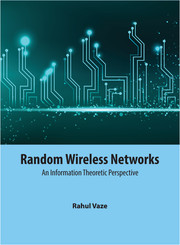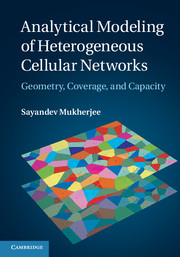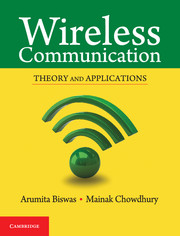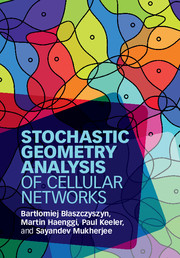Stochastic Geometry for Wireless Networks
Covering point process theory, random geometric graphs and coverage processes, this rigorous introduction to stochastic geometry will enable you to obtain powerful, general estimates and bounds of wireless network performance and make good design choices for future wireless architectures and protocols that efficiently manage interference effects. Practical engineering applications are integrated with mathematical theory, with an understanding of probability the only prerequisite. At the same time, stochastic geometry is connected to percolation theory and the theory of random geometric graphs and accompanied by a brief introduction to the R statistical computing language. Combining theory and hands-on analytical techniques with practical examples and exercises, this is a comprehensive guide to the spatial stochastic models essential for modelling and analysis of wireless network performance.
- Practical applications of stochastic geometric theory equip readers with the tools necessary to produce generalised performance metrics over all possible network configurations, weighted with their likelihood of occurrence
- Accompanied by 200 exercises and worked examples, designed to improve understanding of theoretical concepts
- Includes an introduction to the GNU Project's R language and environment for statistical computing
Reviews & endorsements
'This book is a welcome addition to the rapidly developing area of applications of stochastic geometric models to telecommunications.' Ilya S. Molchanov, American Mathematical Society
Product details
October 2012Hardback
9781107014695
302 pages
246 × 175 × 20 mm
0.68kg
67 b/w illus. 2 tables 111 exercises
Available
Table of Contents
- Part I. Point Process Theory:
- 1. Introduction
- 2. Description of point processes
- 3. Point process models
- 4. Sums and products over point processes
- 5. Interference and outage in wireless networks
- 6. Moment measures of point processes
- 7. Marked point processes
- 8. Conditioning and Palm theory
- Part II. Percolation, Connectivity and Coverage:
- 9. Introduction
- 10. Bond and site percolation
- 11. Random geometric graphs and continuum percolation
- 12. Connectivity
- 13. Coverage
- Appendix: introduction to R.







